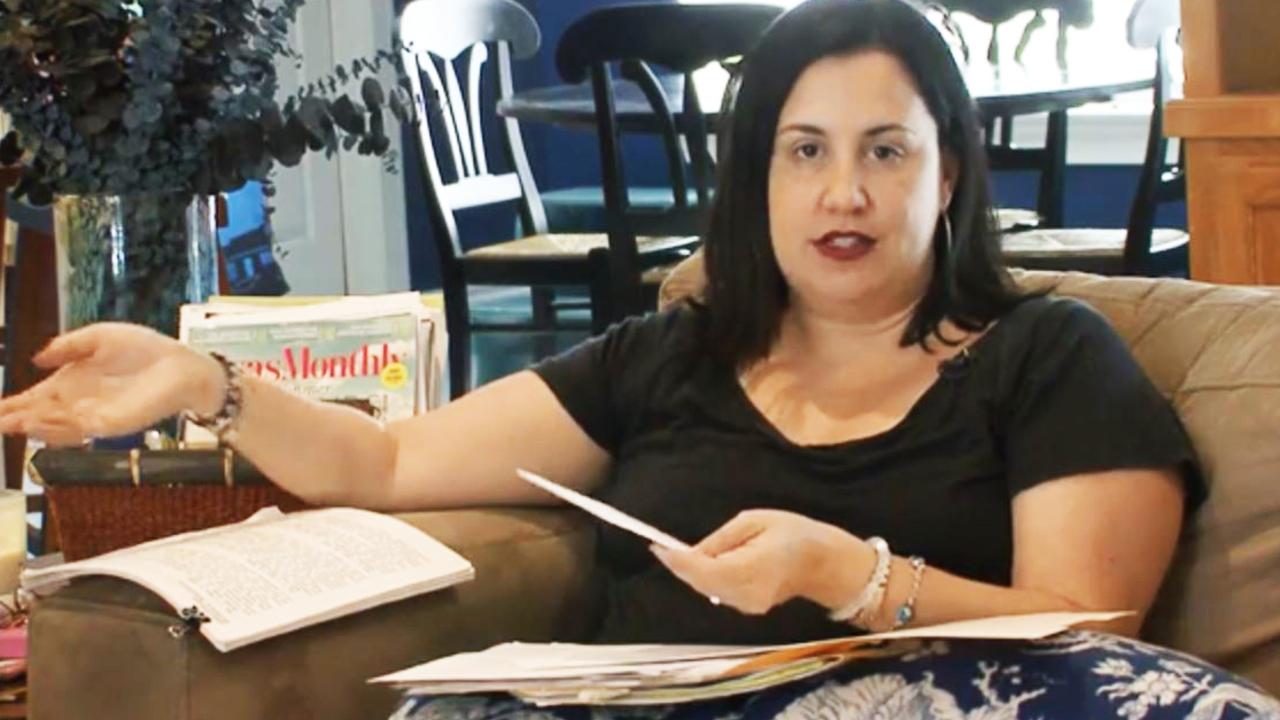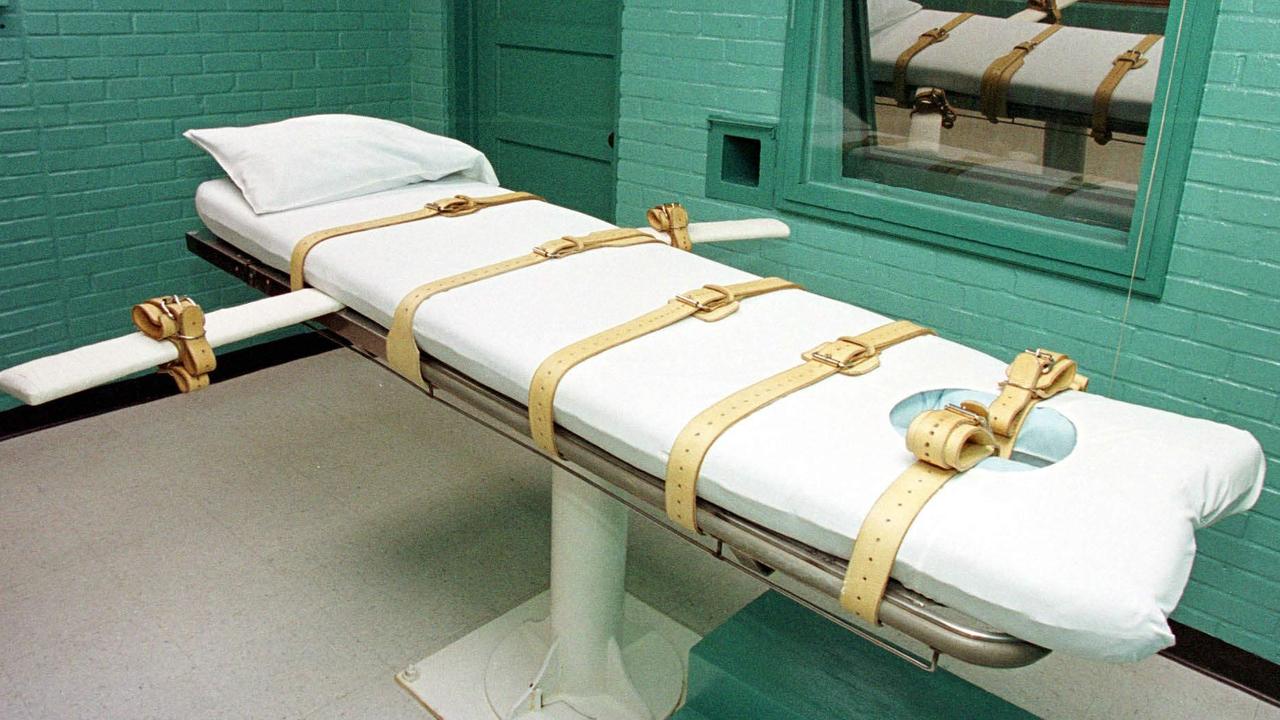Death Row: The Final Minutes reveals what really happens in Texas’ execution chambers
CRIME reporter Michelle Lyons reveals what really happens during the final moments of America’s death row prisoners.
NO one ever thinks, “When I grow up, I will watch people die.”
When I was a little girl, I thought I’d grow up to be an art teacher, dressed in funky earrings and paint-covered overalls.
Instead, by the time I turned 40, I had seen more than 280 men and women take their last breaths in the Texas death chamber, executed by the state for crimes committed here.
Even when I decided to become a journalist, I had no idea that one day, my beat would be covering the last moments of the condemned.
• Australia’s great beer rip off
• Dyson says common item will soon die out
• IGA supermarkets are in deep trouble
It was in early 2000 that I took over the prison beat for The Huntsville Item, the daily local newspaper in the city where each execution in Texas is carried out.
The Item is designated one spot to witness each execution, and that spot became mine. Almost as soon as I started, Texas was on track to carry out a record-breaking 40 executions that year. I was there for 38 of them.
There’s a strange smell in the execution chamber — a weird, chemical odour I was told is down to the type of filter used in the airconditioning system.
I came to associate that smell with death and would smell it everywhere — suddenly, in odd locations, and without warning. It was unsettling. I once began to wonder whether it could seep into my chewing gum while witnessing an execution and I made the decision not to risk chewing it ever again while on duty.
When people ask me about that first execution in 1998, if I’m being really honest, what I remember most is nothing.
I remember the inmate’s name: Javier Cruz. I remember the crime, and where it happened. I remember the way the room looked, how clinical and cold and stark it was that day — and still is. And that’s it.

I don’t remember how he looked, or what he said, or whether he was apologetic. I remember that everyone wanted to know if I was OK afterwards, and I was. Then I had a flash of concern that being OK meant something more — that I was cold or detached — but then I chalked it up to meaning I was a good journalist and I moved on.
It was much the same when I took over the prison beat full-time years later. I took copious notes at each execution, noting in detail what the inmate said while strapped to the gurney, or whether the victim’s family stood near the glass, or if they wept.
Some of my notes went deeper: one inmate, Thomas Mason, looked just like my grandfather — he even had the same mannerisms and eye twitch.
Spencer Goodman, who murdered the wife of blues-rock band ZZ Top manager Bill Ham, looked just like a friend from high school.
I even noted how Jeffrey Dillingham, a hitman who had slashed the throat of a woman in Fort Worth, “had these dimples and actually was a very good-looking man”.
I took those notes, execution after execution, year after year, even after I had left the newspaper and started working at the Texas Department of Criminal Justice as their spokesman in late 2001.
With this job I had closer access to the death row inmates themselves, setting up interviews and, more importantly, seeing them in the hours before their deaths.
Once the inmate was settled into the small holding cell just feet away from the execution chamber, we would visit him to go over paperwork.
To see someone in the hours before they are set to die is truly a bizarre experience and their emotions ran the gamut.
Some men were nervous and quiet. Some were visibly afraid. A few were angry, and those emotions often carried over to the gurney, when they gave their last statements.
While some gave heartfelt apologies or professed their innocence, one inmate, Cameron Todd Willingham, delivered a tirade directed at his ex-wife, including every swear word you could imagine. The warden signalled for the execution to begin while he continued hurling insults at her until he finally became silent.
I carried on for 11 years but I began to struggle. I didn’t like talking about my job and even lied to strangers about it, telling them I was a nursery school teacher.
I believe some of my facade began to fail after I became a mum. I always had great empathy for the family of the victims, but seeing the mothers of the condemned as they prepared to watch their sons die in front of them was gut-wrenching.

There were executions of inmates I didn’t want to happen — a few where I would not have awarded the death penalty had I been a member of the jury.
One was a man named Rodolfo Hernandez, a former hitman who wasn’t a particularly sympathetic character, but whom I’d come to like.
On the day of his execution, he thanked me for helping him meet with police officers so he could confess to other crimes he’d committed — he hadn’t wanted to die with them on his conscience.
He told me I reminded him of his daughter and asked in Spanish if he could shake my hand. I froze. Not long before, a chaplain visiting an inmate on death row had reached into a cell to pray with inmate Juan Soria. But Soria twisted the chaplain’s arm, badly breaking it, tied it to a sheet and began slicing it with a razor.
After a few moments I offered a few fingers, which he shook. He was the only death row inmate I ever touched, and I felt guilty afterwards.
I felt guilty a lot, for feeling sympathy or rooting for mercy, because I always told myself that it was easy for me to take that stance when it wasn’t one of my loved ones who had been murdered.
When I left in 2012, the memories started flooding back. I guess I’d been bottling it up, but being away gave me clarity and I began seeing all those faces — not just the inmates on the gurney, but the mums, faces twisted in pain in the witness rooms; dads trying to hold it together while giving a statement after watching the execution of his child’s killer.
When I started writing my book, I went through each of my old files and felt shame at the folders labelled with names I didn’t even recognise. These were men who I had seen die, yet I had no recollection of some of them at all.
Today I’ve mostly made peace with my past, in that I know witnessing executions was my job and I tried to do it with respect and care.
There were inmates I came to know and like and I didn’t want to see die. There were victims I saw whose pain strengthened my resolve. There were inmate families I saw whose pain strengthened my humanity.
It wasn’t that I ever became anti-death penalty, because I do believe it’s an appropriate punishment for certain capital crimes. But being a witness to the executions over and over again took its toll.
I saw the end result of some of the most horrible things that human beings do to one another — heinous murders perpetrated against innocent victims, broken families, sadness and hurt, anger and fear, despair. And after a while, all those feelings began to bleed onto me too.
Death Row: The Final Minutes: My life as an execution witness in America’s most infamous prison by Michelle Lyons is available to buy on Amazon.
This story originally appeared on The Sun and was reproduced with permission.



